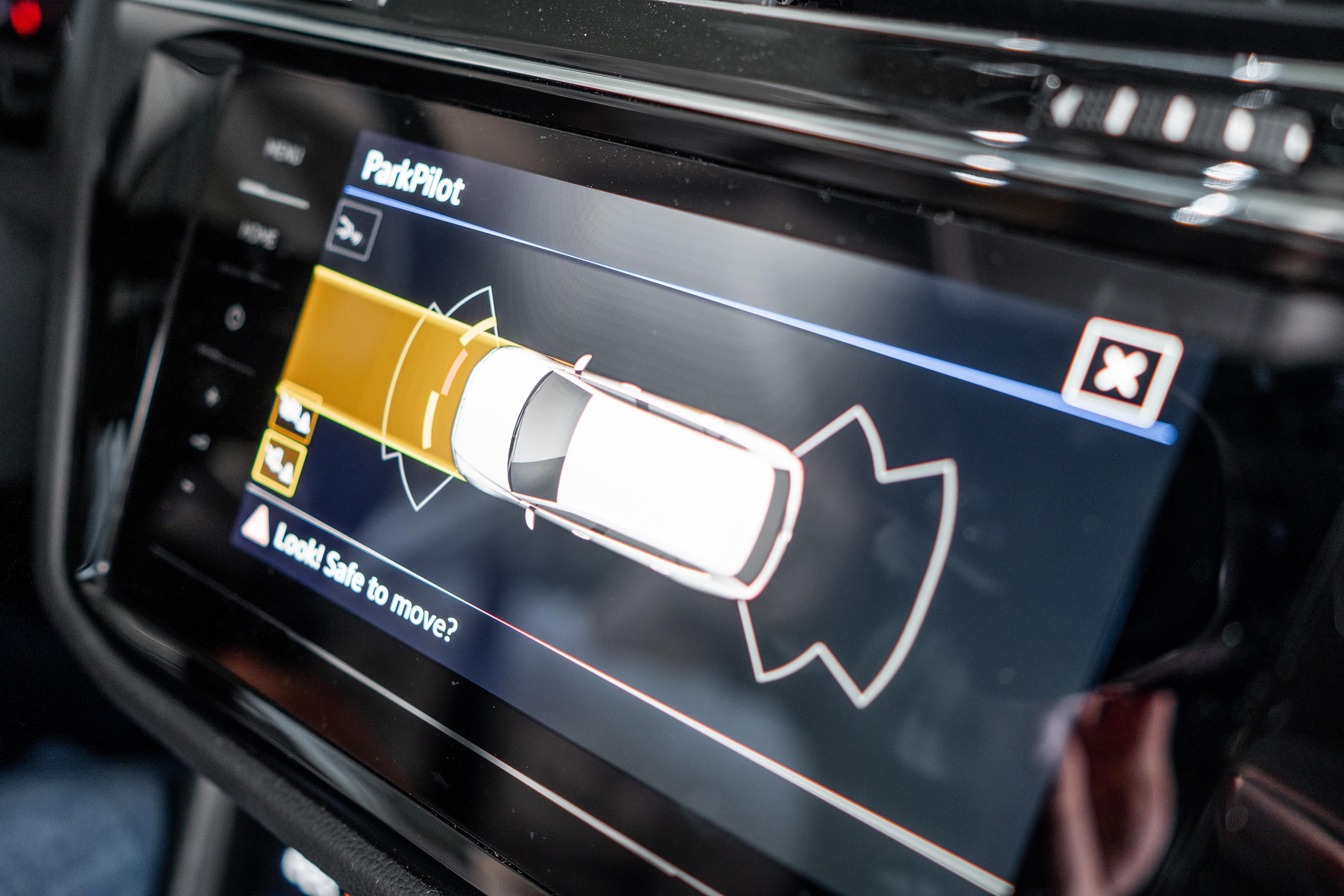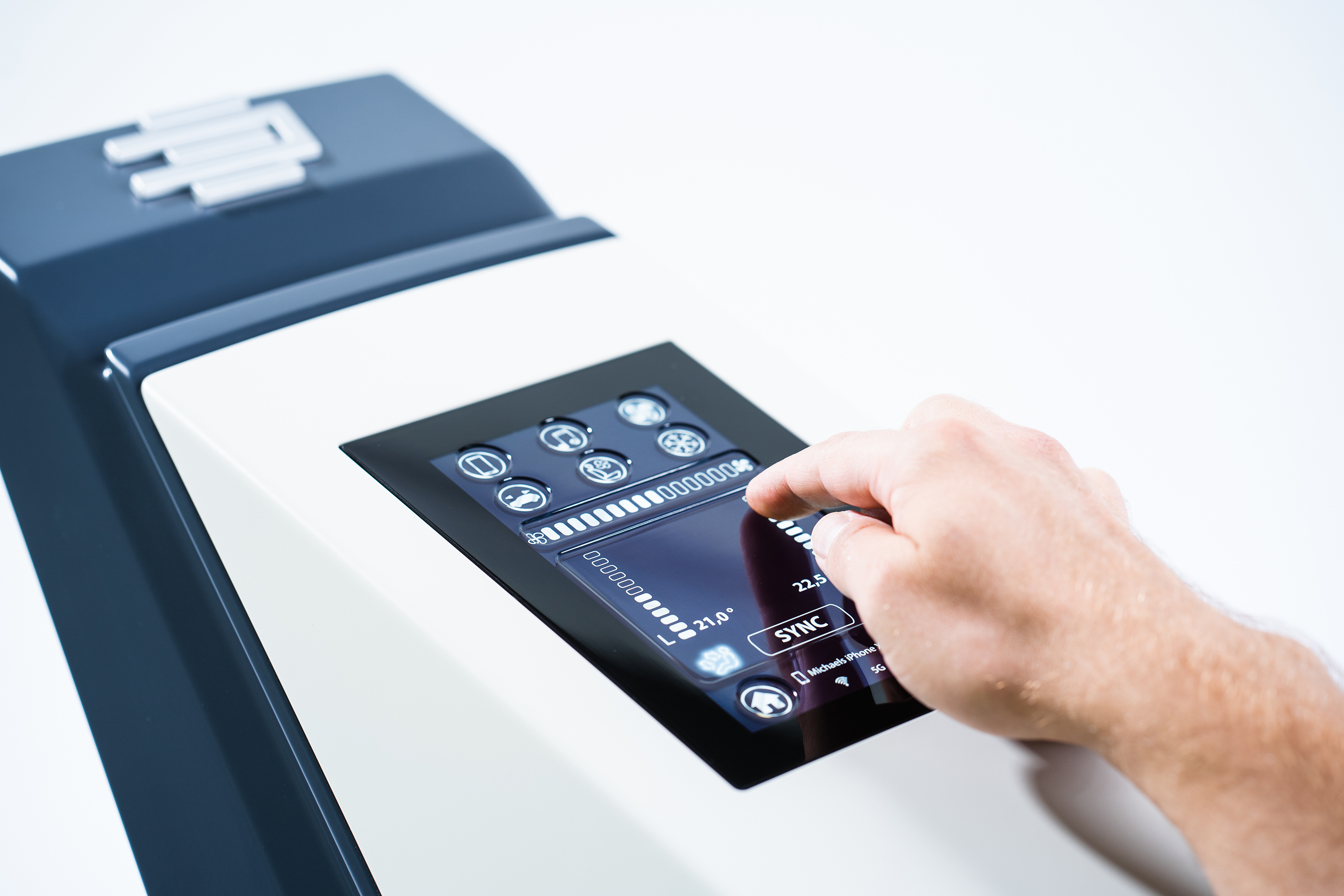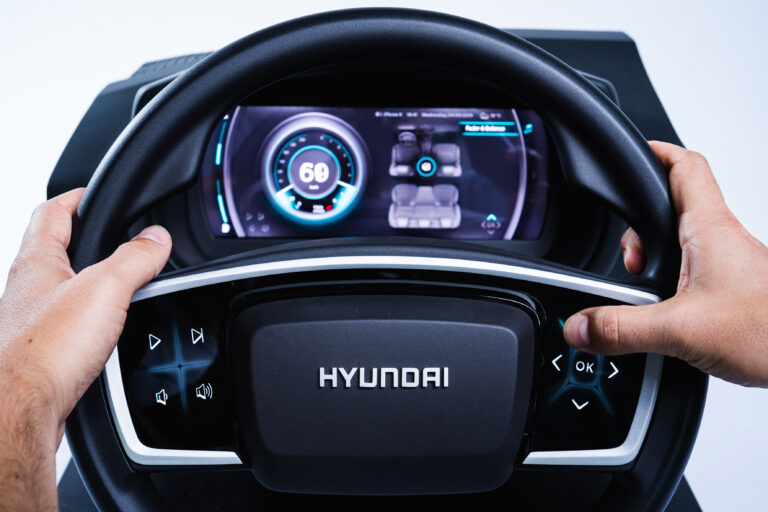Independent engineering service provider EDAG Group has unveiled several new technologies at the Frankfurt Motor Show (IAA), including an innovative virtual cockpit and steering wheel in partnership with the Hyundai Motor Europe Technical Center (HMETC).
For distraction-free driving, EDAG Group’s specialists first of all replaced all of the mechanical keys on the steering wheel with touch-sensitive controls in the form of touch displays. For quick and comfortable operation, favorites can be stored on these. The driver can then use them to operate all functions in the car – from radio volume to seat heating – without letting go of the steering wheel. The controls called up via the steering wheel are displayed on a full-screen monitor in the instrument cluster, so there is no need for the driver to look at the steering wheel.
The displays are configured in such a way that a simple touch will not immediately activate a function; this will not happen until the user presses the control surface concerned a little harder. As confirmation, the driver receives a button click, which he perceives with his finger. This haptic feedback permits blind operation while driving. This is realized by means of a haptic feedback actuator developed in-house by the EDAG Group, which was implanted into Hyundai’s Virtual Cockpit. The haptic module enables freely programmable feedback patterns and can be used with displays of almost any size. In addition, it also serves to mount the display and measure finger pressure.
EDAG also unveiled its system for the efficient validation of the functions of driver assistance systems at IAA. Available under the name of EDscene, this testing system is characterized by a high degree of measuring accuracy and results that can be reproduced at any time. What is more, test procedures can be carried out autonomously. A patent application has been filed for the measuring system with robot and other environment simulation.

EDAG offers its customers the system for validating driver assistance systems in two variants: EDscene.portable is a validation system for mobile applications and is used in tests to ensure the accuracy of the parking aid’s assistance functions. Even under the most difficult of conditions, it can be used to check whether the parking aid works. This includes measuring the field of view, detecting low and hard-to-recognize obstacles, testing for unwelcome road reflection and echoes in heavy rain, and testing the performance of the maneuver braking function to ensure that the ultrasonic sensors on the vehicle function reliably. There are also plans to use other systems, such as cameras, lidar and radar in the future. To this end, specific test procedures can be defined and introduced in cooperation with the customer.
The second variant of the new technology for validating driver assistance systems is EDscene.laboratory. This system is still currently under construction. The focus here is on the autonomously operated reproduction of the vehicle’s environment under laboratory conditions.
The final technology on show in Frankfurt was EDAG Group’s innovative touch display that is capable of improving operator convenience and safety in the car. As the integrated EDAG Haptic Feedback Actuator System features fingertip controls for the infotainment and comfort functions in the vehicle, distraction to the driver is kept to a minimum. The potential of the new system was shown in a demonstrator – a simple center console with an armrest area that illustrates how such operating systems might be implemented as 100% touch display solutions in the future. The display allows for operation without much hand movement, which has a positive effect on ergonomics while driving.

One of the key features of the display are recesses which are intended to serve as finger guides, to enable the driver to find the controls without looking. The brightness, color, form and function of the control elements can be altered dynamically. Furthermore, the user interface can be personalized, and upgrades in the form of software updates or apps are also possible. The display features a larger, rectangular recess, which is reserved for context-sensitive control elements. Also rectangular in shape, but considerably narrower, the control panel above it is designed as a finger guide recess, and though devised primarily for adjusting the volume of the infotainment system, can also be used for other value settings.



